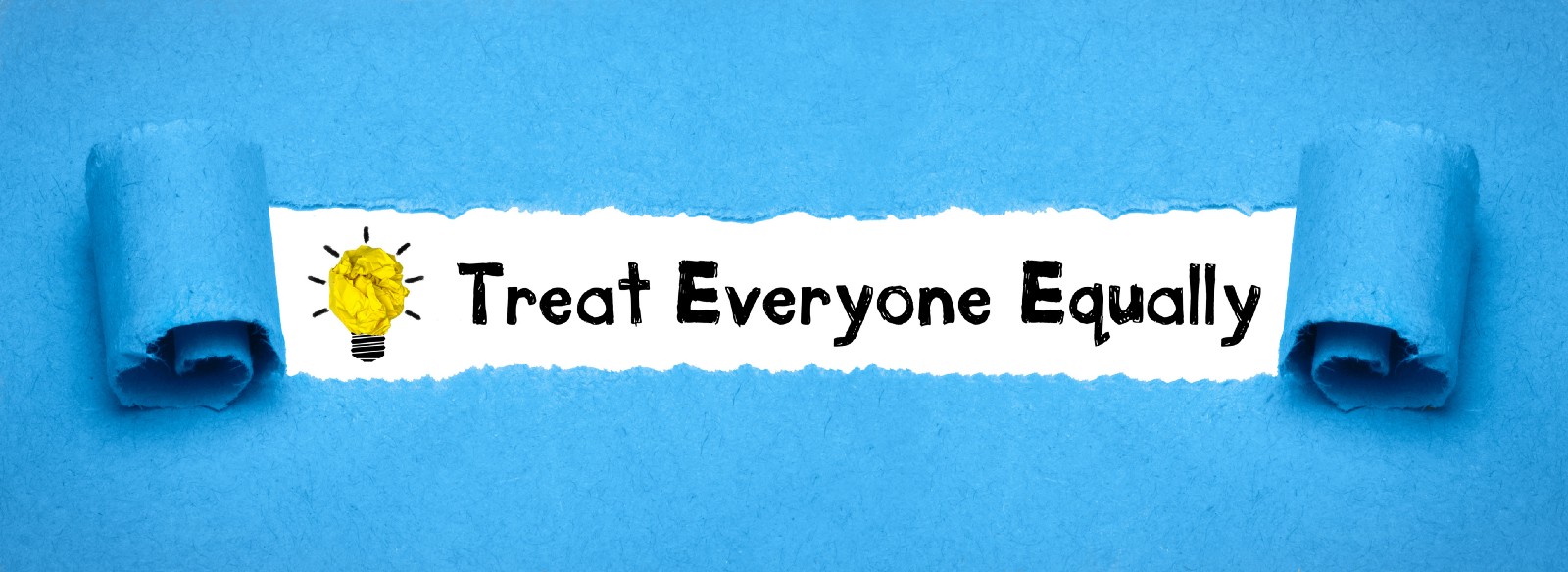Not only is that wrong, that type of ignorance makes the person stating it look amazingly uninformed and biased against people with disabilities.
I just read yet another article, this time quoting a New York state government official claiming “there are no federal accessibility standards.” I would love to be shocked (but sadly I am not) that this government individual is proposing additional regulations to control the avalanche of accessibility lawsuits in New York, in an attempt to regulate something they clearly don’t understand the first thing about.
The federal accessibility standard is called “equal access.” It’s the reason why the American’s with Disabilities Act is considered a civil rights law. If you aren’t providing equal access, you are being discriminatory and raising your lawsuit risk substantially.
A little history on the ADA (bear with me)
I know, I hate history too. But it is pretty important to understand two key points behind the legal foundation of the ADA.
- The ADA was passed before commercial internet was a “thing”. Yet it all courts have found it does apply to websites and mobile applications. How did that happen?
Passing legislation through congress was a nightmare in the ’90s, and even more so today. The people who crafted the ADA were very very smart. They realized that technology would evolve, and they wanted the ADA to be able to evolve with it, without having to go back to the legislature to authorize more protections (and possibly getting turned down).
So, congress gave the Department of Justice the right to update the material covered under the ADA through technical access documents. That is how the ADA now applies to parks, child care centers, movie theaters, pools, and other things that just weren’t contemplated when the ADA was first passed.
2. How is the ADA enforced?
A person with a disability (as defined by the ADA) has one of two mechanisms for enforcement:
a) Making a complaint to a government agency
Sometimes this is the DOJ, other times the EEOC, OCR, or DOT depending on the context surrounding the alleged discrimination. No matter what federal agency handles the complaint, the ADA is always part or all of the underlying law.
b) Filing a lawsuit
People with disabilities are under exactly ZERO obligation to do A before B. They also do not have to provide the defendant with notice to fix the problem. I can tell you from decades of experience, phone messages and emails identifying problems largely go unreturned, but receiving a copy of an “I’m about to file this lawsuit because you aren’t #*($! listening” gets people’s attention.
Why is notice not required? Because the harm occurred to the plaintiff when the barrier was encountered. Repeat after me. THE HARM HAS ALREADY OCCURRED. No amount of fixing the barrier after the plaintiff was discriminated against will “make the plaintiff whole” as they say in courtrooms. Ask me about the time I couldn’t graduate with my class because there was no ramp to the podium where everyone received their diplomas.
But wait, the rule linking the ADA to WCAG 2.0 Level AA as a standard got cancelled?
Yes, yes it did. After being “pending” for six years. Go ahead and ask your friends at Domino’s how claiming “equal access is too vague of a standard because there is no fixed rule in place” as a defense worked out for them. I’ll give you a hint if you don’t want to read the article. It didn’t.
There is an ENORMOUS difference between what is legally required and having a bright line test that makes it easy to measure whether or not you have met the legal requirements.
- Equal access is legally required. Always always always. Whether or not any bright line tests exist to measure it.
- The corellary to the “equal access” rule is separate but equal is always separate but never really equal. Brown v. Board of Education determined this decades ago. Why are we still even talking about this today?
- The various flavors of WCAG are one mechanism to determine whether or not you have met the legal requirements. But not the only one.
The lack of a bright-line test being officially listed in the ADA is not a valid defense because that invalidates the last point but not the first two which are still very settled law. Equal access is required. Period. All the current administration did in canceling the rule making WCAG part of the ADA in an attempt to remove red tape from small business owners is create an accessibility lawsuit free-for-all. Chalk that up under the doctrine of unintended consequences I guess.
Conclusion
There was an avalanche of accessibility lawsuits in 2018 because . . . wait for it . . . 96 % of websites are still inaccessible. Almost 100 % of these lawsuits are being decided in favor of the plaintiffs. There is a message here, but the message is NOT “we have too many lawsuits because there are no federal standards for accessibility.”

0 comments on “Stop saying there are no federal accessibility standards”